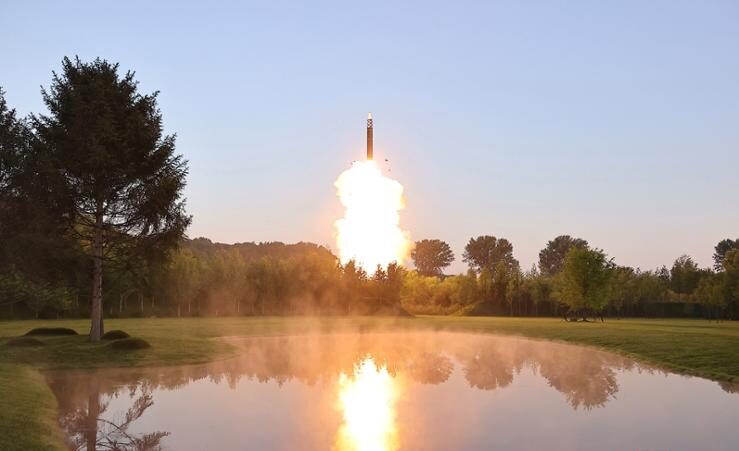WNAM REPORT: President Joe Biden approved a secret strategy earlier this year to focus on China’s growing nuclear threats and prepare the United States for possible coordinated nuclear challenges from North Korea, China and Russia, as per reported Tuesday.
Biden’s approval in March of the revised strategy, called the “Nuclear Employment Guidance,” came amid North Korea’s advancing nuclear and missile threats, China’s rapid expansion of its nuclear arsenal and Russia’s perceived nuclear saber-rattling.
Updated every four years or so, the document is so confidential that only a small number of hard copies were distributed to a few security officials and Pentagon commanders, according to the newspaper.
During a forum hosted by the Arms Control Association in June, Pranay Vaddi, senior director for arms control, disarmament and nonproliferation on the National Security Council, already mentioned that Biden had issued an updated nuclear weapons employment guidance.
Vaddi commented on the guidance, warning that Pyongyang, Beijing and Moscow are expanding and diversifying their nuclear weapons stockpiles at a “breakneck” speed.
“(The guidance) emphasizes the need to account for the growth and diversity of the PRC’s nuclear arsenal and the need to deter Russia, the PRC and North Korea simultaneously,” he told the forum, referring to China by its official name, the People’s Republic of China. “It also reaffirms our commitment to use arms control and other tools to minimize the number of nuclear weapons needed to achieve U.S. objectives.”
Vaddi pointed out that the U.S. will need to adjust its posture and capabilities to ensure its ability to deter growing threats from the North, China and Russia should there be no change in their current nuclear weapons policy trajectory.
His remarks hinted at the U.S.’ ongoing efforts to adapt to what he called the realities of a “new” nuclear era.
Early this month, Vipin Narang, the former acting assistant secretary of defense for space policy, also made similar remarks that, absent a change in the nuclear threat trajectories of China, Russia and North Korea, Washington may reach a point where “a change in the size and posture” of its current deployed forces is “necessary.”
“There is no need to grow the stockpile yet, but adjustments to the number of deployed capabilities may be necessary if our adversaries continue down the current paths,” Narang said.
Moreover, Narang emphasized the need not to “sleep on” North Korean threats, hinting that the U.S. has been keeping close tabs on the North’s advancing nuclear program.
“We can’t sleep on North Korea, which also continues to expand, diversify and improve its nuclear ballistic missile and non-nuclear capabilities,” he said.
“While not a major power rival like the PRC and Russia, North Korea’s continued improvement and diversification of its nuclear and ballistic missile capabilities present deterrence dilemmas for the United States and regional allies,” he added.
Nuclear threats from the three countries came into sharper focus recently as Russia has been deepening its strategic cooperation with both North Korea and China in the midst of its diplomatic isolation caused by Moscow’s war in Ukraine.
In a telling sign of their burgeoning cooperation, Russia and the North signed a “comprehensive strategic partnership” treaty during their summit in June. Russia and China have also boasted their “no limits” partnership, while Washington has decried Beijing for its support for Russia’s defense industrial base.
These developments came amid no progress in Washington’s pursuit of arms control talks or other dialogue to reduce tensions and promote security.

